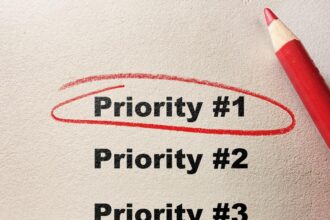If you’re in your mid-50s or younger and are interested in retiring but you aren’t on track to save enough for a full retirement, you might want to consider “Coast FIRE.” It’s a variation on the “Financial Independence, Retire Early” (FIRE) strategy, where you make life choices that save a large amount of money so you can retire before your 60s.
What Is Coast FIRE?
With the Coast FIRE strategy, you minimize your spending and invest as much as possible until you reach a target amount of savings that lets you “coast” toward an eventual retirement in your 60s. The “coast” part means that you keep working after you attain your target savings amount. At that time, however, you reduce your work hours so you earn just enough to meet your living expenses while letting your savings and other retirement resources grow until they can finance a full retirement.
What Is The Difference Between Coast FIRE Vs. Standard FIRE?
The main difference between FIRE and Coast FIRE is that with standard FIRE, you stop working entirely when you hit your target savings amount and live just on your financial resources. This version of FIRE can require saving much more money than Coast FIRE.
However, even with the standard FIRE, working part time at a job you really enjoy can be part of the strategy. As a result, for many people, there might not be that much difference between the two types of “FIRE.”
Pros And Cons Of Coast FIRE
Here are some pros of Coast FIRE:
- Coast FIRE might be more achievable than standard FIRE. You can still plan for reducing your working hours before you retire in your 60s, giving you more time for enjoying life while you’re vital and healthy and before you retire completely.
- You build up financial assets that can help you survive unexpected financial emergencies.
- Continuing to work can give you valuable benefits, such as health insurance and social contacts.
Coast FIRE does have some serious challenges that need to be addressed, however:
- It might be difficult to reduce your spending to enable you to significantly increase your savings for retirement. This challenge can be particularly tough if you have young, dependent children or if you have substantial debt, such as a mortgage.
- You might have trouble finding part-time work after you attain your target savings amount and plan to start “coasting.”
- Planning for Coast FIRE can be quite complex (see below).
How To Calculate Coast FIRE
To implement the Coast FIRE strategy, you’ll want to plan for the day when you can meet the common-sense formula for retirement security:
- I > E, or income greater than living expenses.
This requires projecting the amount of retirement income you can expect to have at a future date from all sources, including Social Security, any pension you might earn, and the lifetime income you can realistically expect from your savings. You’ll also want to estimate your future living expenses for at least two dates: the date at which you want to start coasting and the date at which you want to eventually retire completely. With both dates, you’ll want to consider how your living expenses might change in retirement and recognizing your “needs” vs. your “wants.”
Estimating your future expenses will help you determine a target amount of savings you’ll need at your future “coast” date. Then you can back into the amount you’ll need to save each year from now until that future date. All these calculations involve extensive math, so you might want to work with a retirement planner who’s familiar with the FIRE strategy and its variations.
Coast FIRE Is A Variation On “Bridge” Strategies
Coast FIRE is very similar to retirement “bridge” strategies, where you work enough to cover your living expenses until a time when your retirement resources have grown sufficiently and/or your living expenses reduce enough to enable a full retirement.
You could potentially have multiple “bridge dates” that enable you to continue phasing down your work hours. For example, you could bridge to a future date when your retirement income grows sufficiently until one or more of the following events:
- You attain your target savings amount.
- You reach the age at which you’ve optimized your Social Security income.
- You become eligible for a traditional pension benefit that you’ve earned.
In addition, a future bridge date could be when your living expenses reduce significantly:
- Your children become financially independent and are “off the payroll.”
- You pay off the mortgage on your home.
- You reach age 65 when you’re eligible for Medicare and the cost of medical insurance reduces significantly.
Who Are FIRE Or Bridge Strategies for?
You might be a candidate for the FIRE or bridge strategies if you have the discipline now to spend just enough to meet your basic living needs and still be happy, so you can save significant amounts of money to eventually start “coasting” or retire.
A good first step is to understand the reasons you want to retire. Then, think about how you can remove or mitigate the negative aspects of working and how your life will improve when you retire. Understanding these serious issues will benefit people of any age.
Read the full article here










